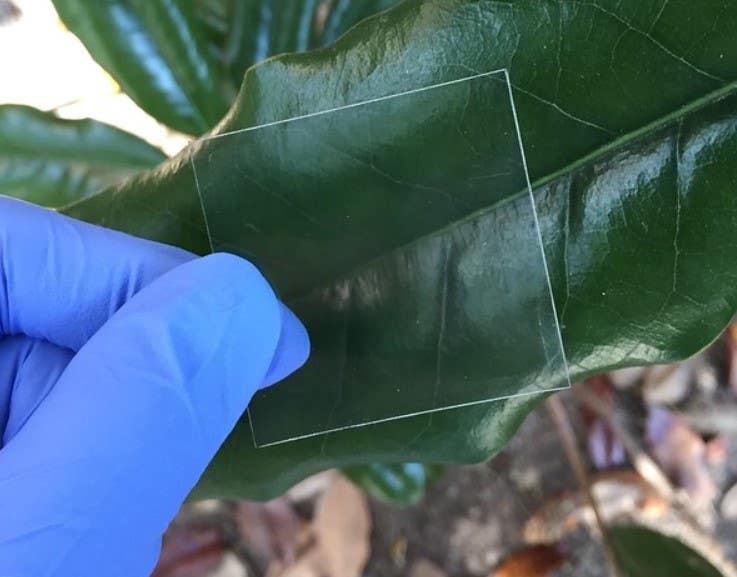Transparent Wood Could Be the Window of the Future
Forest Products Laboratory (FPL) researcher Junyong Zhu in co-collaboration with colleagues from the University of Maryland and

[Oct. 1, 2020: Diane Banegas]
Could looking through trees be the view to a greener future? Trees replacing the clear pane glass in your windows is not a work of science fiction. It’s happening now.
Forest Products Laboratory (FPL) researcher Junyong Zhu in co-collaboration with colleagues from the University of Maryland and University of Colorado, have developed a transparent wood material that may be the window of tomorrow. Researchers found that transparent wood has the potential to outperform glass currently used in construction in nearly every way.
Their findings were published in the Journal of Advanced Functional Materials in their paper, “A Clear, Strong, and Thermally Insulated Transparent Wood for Energy Efficient Windows.”
While glass is the most common material used in window construction it comes with a costly economic and ecological price.
Heat easily transfers through glass, especially single pane, and amounts to higher energy bills when it escapes during cold weather and pours in when it’s warm. Glass production in construction also comes with a heavy carbon footprint. Manufacturing emissions are approximately 25,000 metric tons per year.
Now, transparent wood is emerging as one of the most promising materials of the future.
Transparent wood is created when wood from the fast-growing, low-density balsa tree is treated to a room temperature, oxidizing bath that bleaches it of nearly all visibility. The wood is then penetrated with a synthetic polymer called polyvinyl alcohol (PVA), creating a product that is virtually transparent.
The natural cellulose in its wood structure and energy-absorbing polymer filler in transparent wood means that it is far more durable and lighter than glass. It can withstand much stronger impacts than glass and, unlike glass, it bends or splinters instead of shattering.
Switching to transparent wood could prove to be cost efficient as well. It is approximately five times more thermally efficient than glass, cutting energy costs. It is made from a sustainable, renewable resource with low carbon emissions. It’s also compatible with existing industrial processing equipment, making the transition into manufacturing an easy prospect.
With all of these potential benefits for consumers, manufacturing and the environment, the case for transparent wood couldn’t be…clearer.
This Brighter Side of News post courtesy of the USDA.
Like these kind of stories? Get The Brighter Side of News' newsletter.
Joseph Shavit
Head Science News Writer | Communicating Innovation & Discovery
Based in Los Angeles, Joseph Shavit is an accomplished science journalist, head science news writer and co-founder at The Brighter Side of News, where he translates cutting-edge discoveries into compelling stories for a broad audience. With a strong background spanning science, business, product management, media leadership, and entrepreneurship, Joseph brings a unique perspective to science communication. His expertise allows him to uncover the intersection of technological advancements and market potential, shedding light on how groundbreaking research evolves into transformative products and industries.



